1) Consumer economic optimism stuttering
The Which? Consumer Insight Tracker shows sentiment towards personal finances in the best state since our tracking began. But the last six months have seen attitudes towards the economy take a turn for the worse, largely as a result of a fall in the proportion of consumers rating the economy as "good".
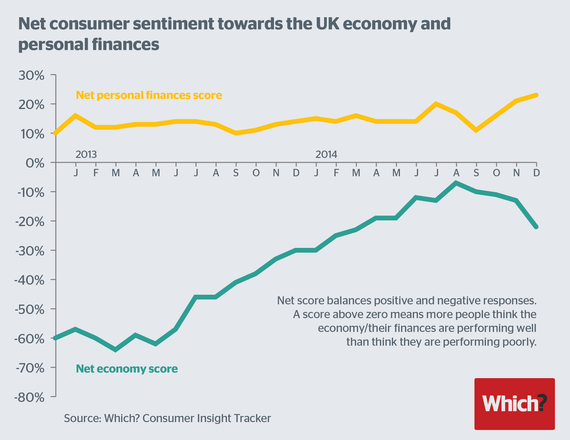
Looking to 2015, consumers still hold a mixed view about the future. While, compared to this time last year, fewer people think their personal finances will get worse over the next 12-months (26% compared to 33% last year), still only one in four (26%) consumers think they will improve. When asked about the economy, consumer views are more pessimistic than this time last year, with fewer people thinking that the economy will improve in the next 12-months (30% compared to 36% last year) and more people thinking it will get worse (30% compared to 28% last year).
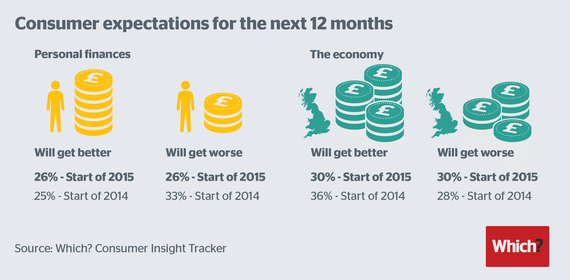
2) Consumer worries falling back, but still high, in essential markets
The Which Consumer Insight Tracker shows concern about energy, fuel and food prices have all dropped in the last year. In fact, worry about all of the areas we track has fallen in the last year, apart from concern about the quality of public services.
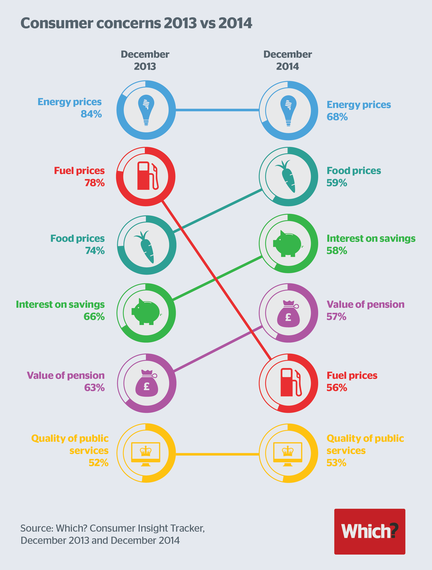
This appears to be in response to the trend in inflation figures. Cost burdens have eased in essential family spending areas - food and fuel prices have fallen and energy prices have not risen this autumn. CPI Inflation overall is low at .5% (and it's worth noting that our Lived Inflation Index shows some households already experiencing inflation of 0.0%).
But, while worry about the costs of essentials fell in 2014, looking at the longer-term, we see that the price of many essentials has increased significantly in the past ten years.
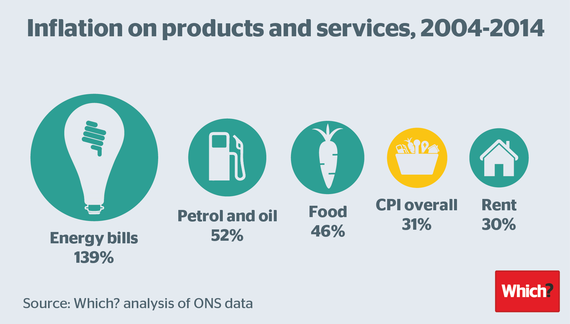
This makes it likely that they will continue to be a concern in 2015. Indeed, despite the drop, these areas still record some of the highest levels of consumer worry in our research. Energy and food prices are currently the top two consumer worries.
3) Interest rate rises undoubtedly a big story
One of the biggest consumer issues for 2015 is bound to be surrounding interest rates: when and how will the Bank of England make a move? Our Consumer Spending Report shows that, on average, £1 in every £5 spent goes on housing costs - so changes to rates will really matter.
Recent estimates from the Bank of England suggest that a base rate rise to 2.5% would leave 480,000 families struggling to pay their mortgages. And, given that this was under an optimistic income growth scenario, the number could be even higher if income growth continues to be weak. With this in mind, it is no surprise that 56% of mortgage owners are worried about their mortgage rates.
4) Financial distress still surprisingly high
Which? measures financial distress on a five-point scale, from the lowest end where consumers are cutting back on essentials, through to consumers who are cutting back and borrowing from friends and family, to the most severe level where consumers are defaulting on a loan, bill or housing cost.
During the course of 2014, the overall proportion of households experiencing some level of financial distress fell significantly (currently 28%, down from 36%). However, there are still some household groups (notably low-income households and renters) where almost half of consumers are experiencing some level of financial distress. Expect this to continue into 2015.
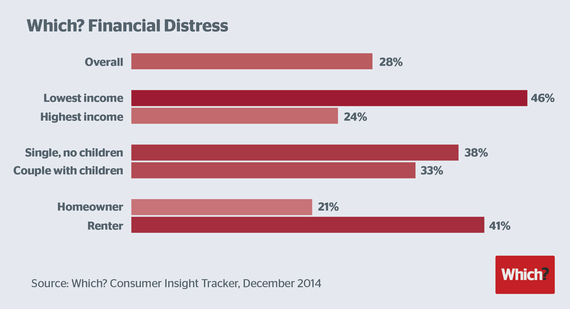
5) Financial resilience still weak
With many households still experiencing financial distress and rising housing costs on the horizon, boosting consumers' financial resilience will remain as important as ever in 2015. The ability for consumers to build a savings buffer and navigate an unexpected expense is vital to ensuring financial resilience.
However, our data shows that four in ten households say they would find it difficult to cope with an unexpected expense, including six in ten of those on the lowest incomes.
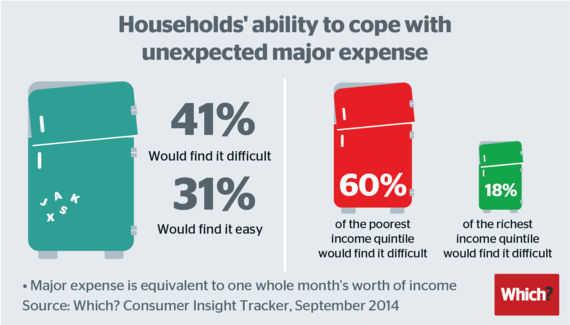
And while half (47%) of households are worried about the level of their savings, a quarter of people (26%) are planning to save less in the coming months and just one in seven (13%) say they plan to add to their savings in the next year. A quarter of people (24%) have no savings at all. Analysis of the Living Costs and Food Survey also shows that the proportion of households saving fell from 15% to 10% between 2003/04 and 2012 and, for those who do save, the average amount saved has fallen to just £23 a week.
Putting consumers at the heart of policy making
Overall consumers had much to be positive about in 2014 and the start of 2015 has seen both consumers in their strongest position since our tracking began and continued signs of easing inflationary pressure (particularly on essentials). But that doesn't mean that there are not challenges ahead - consumers remain uncertain heading into 2015 and the themes highlighted above are just five of many that Which? is trying to tackle. To address these issues, consumers and consumer issues must be put right at the heart of policy making. Keep up to date with our Tracker and Campaigns to see how these themes unfold during 2015.